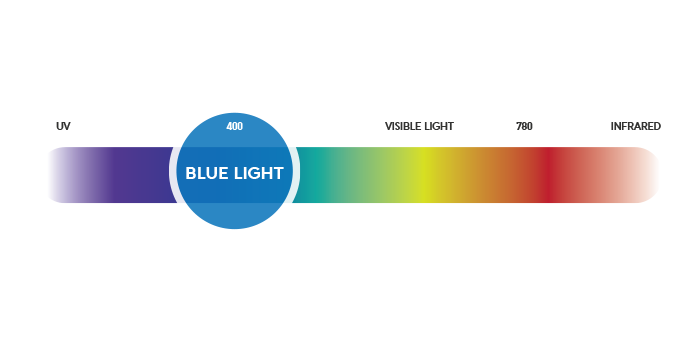Blue Light Regulates Our Sleep Patterns
Blue light has a wavelength that falls between 380-495 nanometers, with a peak at 460. Because of it’s proximity to UV light, blue light has the highest energy of all visible light. In a natural setting devoid of screens, blue light levels are highest at mid-day, providing a good marker for setting the body’s sleep patterns. Our modern day levels of blue light throw off this equilibrium and digital screen use close to bedtime can disrupt this sleep cycle by fooling the brain into thinking it’s mid-day. Many studies have shown that exposure to bright-blue light in the evening can affect your circadian rhythms and make it harder to fall asleep.
Read the recent Scientific American article about the link between blue-light and sleep disruption
Smartphones Emit the Most Blue Light

In our modern, technology-driven society, LED lighting and LCD computer screens mean we have more exposure to blue light than ever before. Smartphones emit the highest levels of blue light as compared to other devices, and because we hold them so close to our faces for so much time, the exposure is maximized. Apple and other smartphone manufacturers have recently realized the importance of selectively filtering out blue light, and have implemented new features like “Night Shift” to help reduce the amount of blue light reaching the eye.
Blue Light Penetrates Deeper Than UV

Even though UV has more energy than blue light, UV is filtered out by the cornea and crystalline lens of our eye. Blue light, on the other hand, penetrates to the back of the eye, where and can cause damage to the retina. The American Macular Degeneration Foundation warns that exposure to blue light, over time, may lead to the development of the sight threatening disease Macular Degeneration.
Blue Light Is Also Present On The Road

Have you ever been blinded by bright, oncoming headlights while driving at night? Evidence shows that modern car headlights using LED or Xenon H.I.D. (High Intensity Discharge) technology cause more glare for drivers due to the blueish, high-energy part of the visible spectrum (in particular in the 440–470 nm range). Intense glare can be a risk, as it reduces the visibility of objects and sensitivity of the eye to contrast. Glare also can be subjectively perceived as discomfort and irritation.
The Solution? Blue Filtering Anti-Reflective Coatings

Blue filtering anti-reflective coatings are for those who spend long hours looking at computer screens and other digital devices. They specifically filter out blue light which causes eye strain and fatigue while at the same time maintaining a clear appearance so you can see and be seen normally.
If you have light colored eyes, or have a family history of Macular Degeneration, blue filtering anti-reflective coatings may provide the additional protection that you need to prevent the onset of this sight threatening disease.

And, blue-filtering anti-reflective coatings reduce dangerous glare while driving at night by reflecting the most harmful wavelengths from modern car Xenon and LED headlights.
We offer blue filtering anti-reflective coatings from the leading companies in the field such as:
- Carl Zeiss DuraVision BlueProtect
- Crizal Prevencia
- Hoya Recharge
- Unity TechShield




